Saving the Tasmanian Devil
The Tasmanian Devil is truly one of a kind – the world’s largest surviving carnivorous marsupial. See this and other Australian native wildlife icons in Tasmania on a escorted small group tour for mature and senior travellers, couples or solo travellers to Australia.
2 Feb 21 · 8 mins read

Saving the Tasmanian Devil
The Tasmanian Devil is truly one of a kind – the world’s largest surviving carnivorous marsupial, it is found only on the island state of Tasmania, Australia. Once considered a vicious predator and even nuisance to early European settlers, the devil’s image has been majorly transformed since the mid-1990s due to the impact of the infectious cancer known as Devil Facial Tumour Disease (DFTD). Tens of thousands of devils have died from the disease and the species is now listed as Endangered – at high risk of extinction in the wild.
Much effort has been out into research and conservation programs as a response. Investigations into possible vaccines and chemotherapeutic agents is ongoing. Infected animals have been trapped and removed from affected populations. Disease free insurance populations have been established in both Tasmania and the Australian mainland. And a large-scale captive breeding program across various institutions is in place. However, recent discoveries have suggested that it is a natural phenomenon that is most effectively saving the Tasmanian devil as the animal evolves itself to adapt to the disease.
This article explores the nature of the Tasmanian devil and DTFD and its impacts and solutions. It is intended as background reading for Odyssey Traveller’s Wildlife Tour of Tasmania for mature and senior travellers. Wildlife-rich destinations are found at regular intervals along the route on this 19-day guided tour for a maximum of 15 people. By day, wombats, platypuses and echidnas forage abroad and as night falls many other animals, like the Tasmanian pademelon, Bennett’s wallaby, long-nosed potoroo, and Tasmanian devil appear from their hidden daytime resting places. Combining this with the dramatic scenery of places like the Gordon River, Cradle Mountain, the rugged South East coast and the South West coast, and any National Park creates for a visually stunning trip.

What is the Tasmanian Devil?
Tasmanian Devils are the largest surviving carnivorous marsupial in the world, characterised by fierce temper, foul odour, keen sense of smell, and ferocity when feeding. About the size of a small dog, they typically weigh between 4kg and 14kg and stand about 30cm tall. Their body length varies from 37cm in females to around 65cm in males, including a thick bushy tail about half that length. They store fat in their tails during times of plenty to draw on when food is scarce.
They have a black coat, with a large whitish stripe across their breast and the odd spot on their sides. Their build is stocky and muscular, with a large squarish head and forelegs slightly longer than its hind legs, which is unusual for a marsupial. Long whiskers, dark eyes, and pink nearly hairless ears sit on a compact face.

Their large head and neck, powerful jaws and tooth structure give them the strongest crushing power per unit body mass of any existing predatory land mammal (about the same as a dog four times their size). This allows them to consume bones, fur and exo-skeleton.
Their diet varies widely depending on what they can find including birds, fish, insects, frogs, reptiles, and small mammals, taking prey up to the size of a small kangaroo. Generally, though they are opportunistic, scavenging carrion such as roadkill and dead sheep more than they hunt live prey.
As nocturnal animals they spend their days sleeping in dens made in hollow logs, caves or old wombat burrows lined with grass and leaves. By night they search for food, making eerie growls as they prowl. These sounds then turn to extremely loud, harsh and disturbing screeches at group feeding times around carcasses. This late-night ‘other worldly’ howl is done in order to establish dominance. Heard by early European settlers, it is what led to their common name.
Their lifespan is very short. In the wild, a healthy, disease-free devil can live up to 5-6 years old. This may extend up to 8 years in captivity.

Devil Facial Tumour Disease
Since the mid-1990s, Tasmanian devils have been fighting for survival against DTFD, a bizarre transmissible cancer which develops rapidly and is fatal. It has already reduced the Tasmanian devil population by an estimated 80 per cent, from 140,000 Tasmanian devils to around 20,000, to a point where the species is now considered endangered.
The disease is unusual in that the cancer tumour cells themselves are transmitted. These cells are genetically very different from the host and are all clonal descendants from the original cancerous devil. They spread through direct contact between devils, most likely through biting, particularly when canine teeth come into direct contact with the diseased cells. Other modes of transmission may include the ingestion of infected carcasses and the sharing of food.

Under normal circumstances, these types of cells should be recognised as foreign or infectious and rejected by the devils’ immune system. In this case, however, the tumour cells are able to hide themselves from recognition because the devil population is so uniform that the cells are not seen as ’non-self’. Under disguise the disease then freely attacks the body.
Once affected, massive tumours on the face or inside of the mouth appear on the Tasmanian devils. The tumours are locally aggressive, destroying the underlying bone of the jaw which interferes with feeding. The devils then die of starvation, organ failure, or secondary infection, usually within three to six months.
Most infectious diseases tend to peter out as population numbers become low and the animals too widely spread to infect one another. However, the devils bite each other frequently, particularly in fights over food and mates, for which they cover great distances. And so, DFTD continues to spread to nearly every adult.
First observed in north east Tasmania, the disease has since spread across almost the entire state, with only some areas of western and north-western Tasmania confirmed to have remained disease free. Many experts worry that if the pattern of rapid decline continues, the disease will eventually drive the species on the Tasmanian mainland into extinction.
What’s Being Done to Prevent Extinction?
DFTD currently has no known vaccination, treatment or way to detect the disease before the tumours occur. Ongoing research is attempting to find ways to diagnose and prevent the disease in the wild but this research is complex and lengthy. A number of chemotherapeutic agents have been trialled, but none have shown any efficacy in treating the disease. It is hoped though that further research into how the disease tricks the devil’s immune system could soon lead to a vaccine.
Meanwhile, over the last 10 years much effort has been put into cutting edge conservation programs. One approach has been to attempt to suppress the disease by trapping and removing infected animals from affected populations. It was expected that if enough could be removed sufficiently rapidly, then the disease could be eliminated.
Despite some initially promising signs in trials, however, the spread of the disease was not slowed. Instead, mathematic modelling has suggested that 95% of all infectious devils would need to be removed on a regular basis to stop the disease. This is not possible because many devils for whatever reason don’t enter the traps, and as tumours take time to grow and become detectable many infectious devils are also missed.
Better progress has come from the establishment of disease-free insurance populations of devils. These exist on Maria Island off the east coast of Tasmania, as well as at a fenced off location on the Tasman Peninsula and at an urban facility in the Hobart suburb of Taroona.
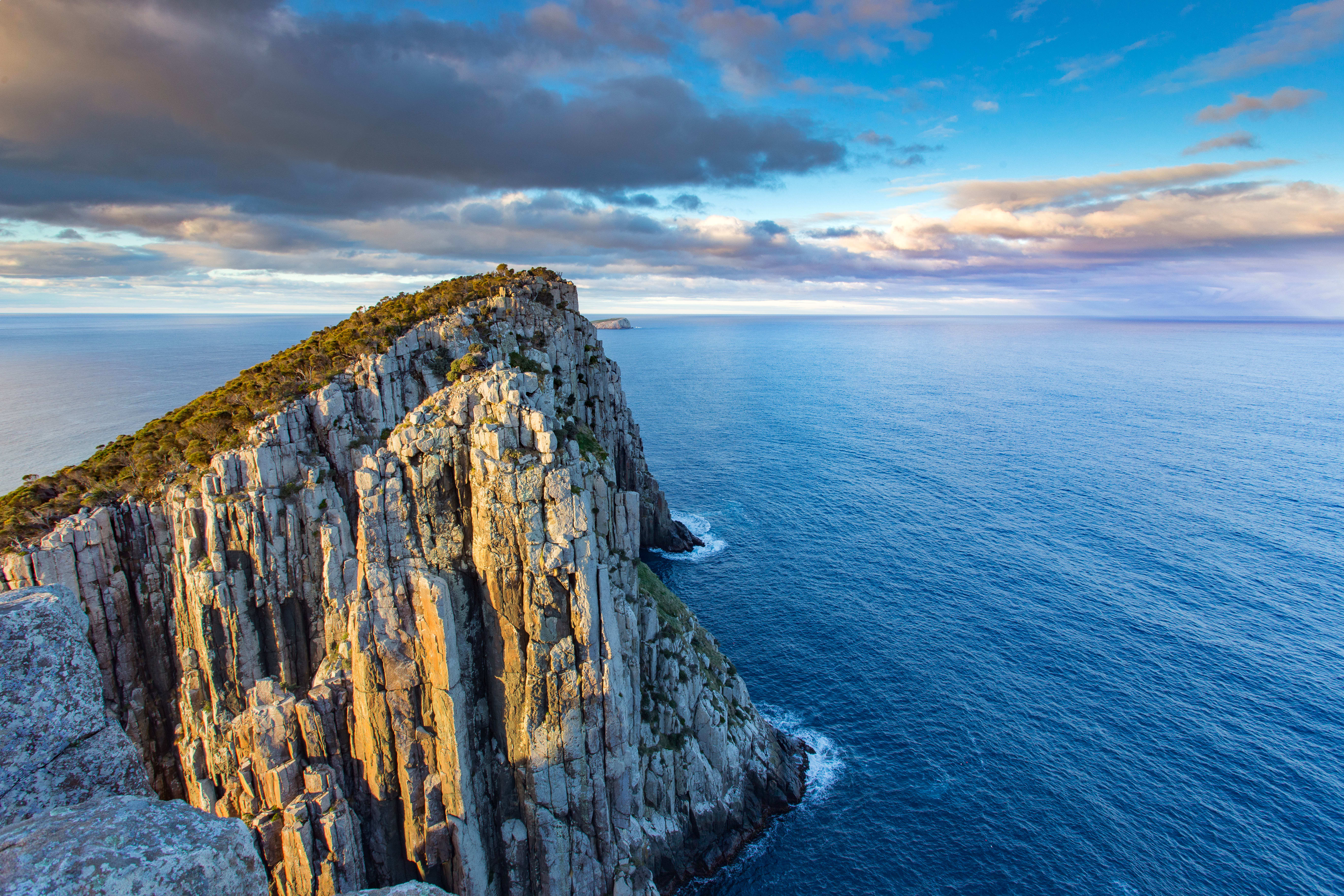
Twenty-six devils were also returned to the forests of mainland Australia In 2020, for the first time in 3,000 years. Assuming all goes well, there are plans to release 40 individual devils into the same protected forest over the next two years.
Moreover, very successful captive breeding program is also currently in place with more than 490 disease-free devils in more than 20 institutions both on the Australian mainland and in Tasmania. Healthy devils are released at appropriate times to maintain the species’ ecological function in the long-term.
Evolution to the Rescue
While numerous conservation plans have been designed and implemented by humans, it is a natural phenomenon which is proving to be most efficient at reducing transmission of DFTD.
In early 2010, scientists found the disease to be increasing much slower and to less effect in north-western Tasmanian devil populations. This is due to subtle genetic diversity compared to those populations in eastern Tasmania, enough for their bodies to recognise the cancer as foreign. As such, DFTD has failed to take hold to such extent here as in other populations.
Now, recent research has shown that the general spread of the disease across all Tasmanian devil populations has slowed and the species is likely to survive. Scientists have found that the reproduction number of cases of each primary case has fallen from about 3.5 at the peak of the epidemic to less than one. This suggests the disease and the devils are now coexisting in a steady state.
This research shows that the devils are evolving and adapting to the threat. Frequencies of gene variants associated with immune functions having increased in populations, allowing them to resist the disease – and tumours have even shrunk and disappeared. In all the discoveries suggests Tasmanian devils can evolve very rapidly, in over just five generations or so, in response to the disease and their future survival is looking increasingly encouraging.
Tours of Tasmania
Odyssey Traveller visits Tasmania as part of three guided tours:
- Wildlife-rich destinations are found at regular intervals along our Wildlife Tour of Tasmania for mature and senior travellers. The aim of this tour package is to provide access to a variety of natural Tasmanian locations where wildlife can be experienced, including visiting World Heritage areas such as the Tarkine rainforest or places such as Cape Grim in the North West. We provide the opportunity to observe a variety of endemic species, combined with dramatic scenery of places like the Gordon River, Cradle Mountain, the rugged South East coast, the South West coast, and multiple National Parks. Where possible, ecosystems will be analysed in relation to the animals we see. During our learning about the wildlife of Tasmania we will also examine aspects of Tasmania’s Aboriginal and Early European history, as well as a look at the conservation history of this island state.
- Our Small Group Tour of Flinders Island explores spectacular scenery, rugged coastline, and stunning views often in a wilderness setting. The field trips during this 9-day walking holiday allow the visitor to learn and experience the natural wonders of the islands that make up the Furneaux Group, deep in the Bass Strait. Visitors on this guided walking tour learn about the abundant wildlife, including sea lions and wildflowers, the bird life, the spectacular scenery, the amazing geology, and the fascinating, if not sometimes uncomfortable, history.
- Meanwhile our Colonial Tasmania Small Group Tour is especially designed for those with an interest in colonial history. Naturally, this being Tasmania, we will also travel through many areas of natural beauty, pristine wilderness, spectacular landscapes, stunning scenery and dramatic coastlines on this sightseeing tour. We partake on a a circular route that begins and ends in Hobart. After exploring the area around Hobart and the east coast, we journey north through the heart of the island, through lands settled by the early immigrants, until we reach Launceston. From Launceston we travel through the Tamar valley along the rugged coastline of the north coast, north west as far as Stanley before heading back south to the pristine wilderness, spectacular landscapes, and rugged mountains around Cradle Mountain and on through Strahan, Queenstown and past Lake St Clair, before arriving back in Hobart.
Odyssey Traveller has been serving global travellers since 1983 with educational tours of the history, culture, and architecture of our destinations designed for mature and senior travellers. We specialise in offering small group tours partnering with a local tour guide at each destination to provide a relaxed and comfortable pace and atmosphere that sets us apart from larger tour groups. Tours consist of small groups of between 6 and 12 people and are cost inclusive of all entrances, tipping and majority of meals. For more information, click here, and head to this page to make a booking.
Articles about Tasmania published by Odyssey Traveller:
- Hobart
- Flinders Island
- Cradle Mountain
- Freycinet Peninsula
- Lake Argyle
- Bruny Island
- Highlights of Australia: Dutch Tulips of Table CapeFor all the articles Odyssey Traveller has published for mature aged and senior travellers, click through on this link.
External articles to assist you on your visit to Tasmania:
Related Tours
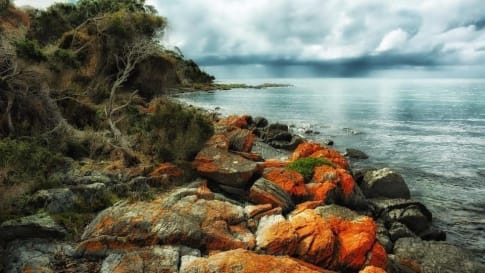
19 days
Mar, Nov, FebDiscovering Tasmania’s Wildlife
Visiting Tasmania
Small group tour of up to 15 mature and seniors travellers visiting and learning about Tasmania's wildlife and history. Visit Maria Island, Freycinet peninsula, Cradle Mountain, Strahan, Lake St Clair and Bruny Island over 16 days.
From A$11,450 AUD
View Tour
days
Mar, Aug, Sep, Oct, Nov +3Tours of Tasmania; exploring colonial history
Visiting Tasmania
Escorted program for couples and single travellers visiting Hobart, Launceston through the Tamar Valley along the rugged coastline of the north coast and heading back south to the pristine wilderness around Cradle Mountain and then on through Strahan, Queenstown and past Lake St Clair, before arriving back in Hobart. This 18 day small group tours to Tasmania for mature and senior travellers interested in the colonial history of Tasmania. We follow the footsteps of the colonists, visiting the churches where they worshipped, the houses in which they lived, the taverns where they drank and some of the mills in which they worked.

9 days
Mar, Nov, OctSmall group tour of Flinders Island
Visiting Tasmania
Explore and learn about Flinders Island on an escorted small group tour for mature and senior travellers who enjoy a walking holiday. For couples or solo travellers. We also explore Cradle Mountain and Launceston.
From A$6,950 AUD
View TourArticles about Tasmania

Atmospheric Measurements at Mauna Lao & Cape Grim
Climate change and the Industrial world. For mature and senior Travelers couples or solo, being aware of the journey and learning that they are part of is important when taking a small group educational tour.

Bass & Flinders Mapping of Tasmania
Learn about Tasmania history on an escorted small group tours for mature and senior couples and solo travellers interested in Aboriginal, wildlife and colonial history of Tasmania, Australia.

Bruny Island, Tasmania
Explore the sights and history of Bruny Island, with its soaring dolomite cliffs and white sand beaches, it is home to some of Tasmania's richest natural heritage. Odyssey offers small group tours for mature and senior travellers, couples, and solo travelers to Australia and Tasmania.

Cradle Mountain, Tasmania
One of Tasmania's most iconic natural wilderness destinations. Explore Cradle mountain on a seniors small group tour of Tasmania designed for active couples and solo travellers or select another iconic Australian or New Zealand tour.

Flinders Island, Tasmania
Learn more about this island in the Bass strait as you prepare for week long small group walking tour of the island that begins and ends in Launceston. For fit mature and senior travellers, couples or singles with an interest wildlife and history.

Freycinet Peninsula, Tasmania
Small group tour of the Tasmanian wilderness for senior travellers. This tour for active couples and solo travellers explores Wineglass Bay on the Freycinet Peninsula is one of the jewels of Tasmania's east coast, walking a section of the bay of fires walk and learning about Aboriginal history.

Highlights of Australia: Dutch tulips of Table Cape, Tasmania
Highlights of Australia: Dutch tulips of Table Cape, Tasmania Australian tulip lovers take note. While thanks to coronavirus, a trip to the world famous Kukenhof Gardens in the Netherlands might be off the table for…
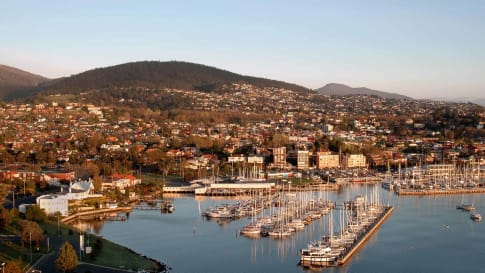
Hobart, Tasmania
Join some of many classes offered in the summer schools each January for a fortnight in this city or take a small group tour for senior and mature travelers of Tasmania wildlife & history.
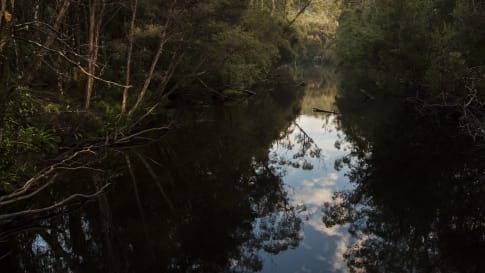
Ice age archaeological sites of the Tasmanian Wilderness World Heritage Area, Australia
Ice age archaeological sites of the Tasmanian Wilderness World Heritage Area, Australia The Franklin-Gordon Wild Rivers National Park is one of the most remote places in Australia, a wild labyrinth of winding gorges, rushing rapids,…

Lake St Clair, Tasmania
Australia's deepest lake; Lake St Clair formed by ice during several glaciations over the past two million years. Visit and learn on a escorted small group tour of Tasmania for seniors. For active couples and solo travellers exploring Australian wilderness.

Launceston, advice for small group tours
Launceston, learn about this early British settlement in Tasmania on the Derwent river as well other pieces on the island state. Article supports small group tours for mature and senior travellers across Australia.
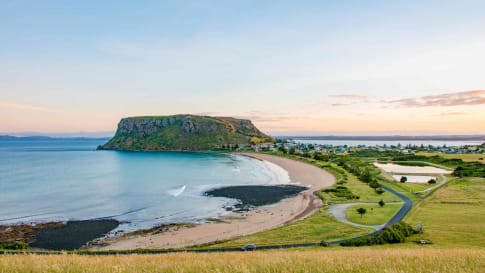
Stanley, Tasmania
Explore the sights and history of Stanley, with its historic colonial buildings and pristine natural landscape, Stanley is one of North West Tasmania's highlights. Odyssey offers small group tours for mature and senior travellers, couples, and solo travelers to Australia and Tasmania.

Strahan and the Gordon River, Tasmania
Learn and explore Strahan and the Gordon river on Tasmania's west coast on a small group tour for senior travellers. This 16 day is for active couples and solo travellers who seek to learn as they travel. View some of the Best tours of New Zealand and Australia.
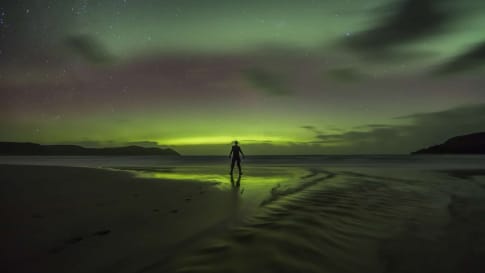
The Aurora Australis
Witness the incredible sights of the Aurora Australis, the Southern Lights. Much like its northern counterpart, the dancing lights of the Aurora are a magical, and unforgettable sight. For the fortunate traveller, you just might catch a glimpse of this phenomenon on your trip to Tasmania or New Zealand. Odyssey offers small group tours for mature and senior travellers, couples, and solo travelers to Australia and New Zealand.

The Tarkine Rainforest, Tasmania
The Tarkine coast mapped by Bass and Flinders is a unique forest environment, explored on a small group tour for mature and senior travellers for couples or solo participants. The northwest of Tasmania including this cool temperate rainforest is a conservation area rich in Aboriginal history from the ice age.



